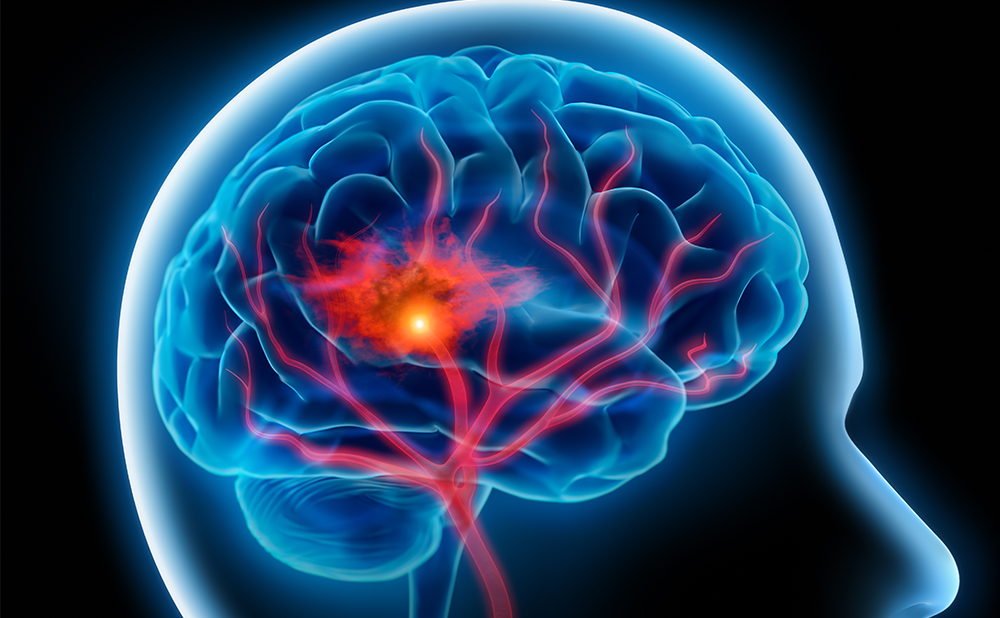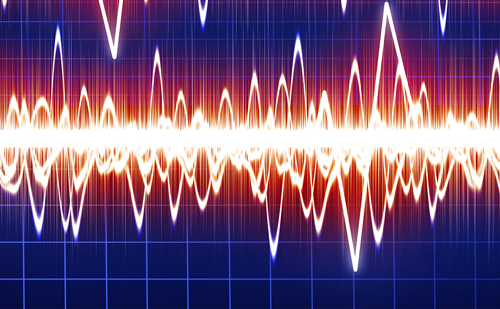The revolutionary discovery of transcranial electrical stimulation (TES) by Merton and Morton1 became a well recognized method for corticospinal tract (CT) activation and has been used in the clinical setting for the last 25 years. Due to the painless method of brain stimulation and other advantages after introducing transcranial magnetic stimulation of the brain, TES is mostly used during intraoperative monitoring of the functional integrity of the CT in comatose patients, and as a research tool in clinical neurophysiology. We will describe the use of TES during surgery in anesthetized patients and highlight the underling physiology of the motor-evoked potentials (MEPs) elicited by this method.
Methodology for Eliciting and Monitoring Motor-evoked Potentials of Patients Under General Anesthesia
This methodology is schematically presented in Figure 1. Stimulation of the CT can be achieved either transcranially or over exposed motor cortex, depending on the requirement of the actual surgical procedures, with recordings of MEPs over the spinal cord (D and I waves) or over the limb muscles (muscle MEPs). D waves represent a neurogram of the fast neurons of the CT, which is not significantly influenced by non-surgically induced factors (anesthesia, etc.). Stimulation of the CT takes place intracranially, distal to the cortical motoneuron body, while recording is performed above the synapses of the CT at the α-motoneuron. As no synapses are involved between the stimulating site and the recording site, the D wave is very stable and reliable and a single stimulus is sufficient to elicit it. Therefore, we consider the D wave to be the ‘gold standard’ for measuring the functional integrity of CT. In order to elicit MEPs in the limb muscles, we need to use a short train of stimuli and, due to the influence of general anesthesia, temporal summation of the descending volleys through the CT is required in order to overcome the inhibitory effect of anesthetics on α-motoneuron excitability. A total venous anesthesia is also preferable without muscle relaxant for the successful application of this technique.
It is well recognized that the application of TES during (neuro) surgical procedures makes a difference in the motor outcome of patients.2–5 This is due to the fact that this method is simple, gives intraoperative feedback about the functional integrity of the CT online, is CT-specific, is safe to use, and correlates post-operatively with motor status. Prior to the ‘era’ of MEPs, final results on the intraoperative wellbeing of the CT were indirectly obtained by monitoring the somatosensory-evoked potentials (SEPs). This approach resulted in a long feedback, not only due to the time spent in averaging multiple single sweeps—which was not always suitable for most surgeries— but also because of the unspecific role of SEPs in evaluating the functional integrity of the CT. Furthermore, the appearance of false-negative results, such as a patient ending surgery with severe motor deficit in spite of preserved SEPs, had been reported.5–7 In the largest survey on SEP utility during scoliosis surgery (condition burden with low incidence but very serious neurological deficit), Nuwer et al.8 found that only 0.063% of patients with preserved SEPs after surgery had permanent neurological deficits (false-negative results using SEP monitoring). This represents 34 patients of 50,207 on whom surgery had been performed. In the same study, false-positive results for SEPs were 0.983%, or 504 patients, which is additional evidence that SEPs are valuable but not always sufficient when monitoring the CT of the spinal cord.
In orthopaedic procedures such as scoliosis surgeries, a combination of SEP and MEP monitoring can substitute the Stagnara wake-up test (testing of motor status in patients who wake during surgery).9 Therefore, testing with MEPs instead of the wake-up test can be used on very young, mentally retarded, or otherwise unco-operative patients. Monitoring muscle MEPs intraoperatively using a short train of stimuli was expanded and is now able to replace the mapping of the motor cortex and subcortical motor pathways previously carried out by the Penfield 60Hz stimulation technique (except for the mapping of the speech area). This is an important methodological improvement because use of the short train of high-frequency stimuli technique significantly reduces the number of electrical stimulations related to seizures. Furthermore, with the Penfield technique it is not possible to continuously monitor the integrity of CT, but only to map (neurophysiologically indicates anatomical localization) either the motor cortex or subcortical motor pathways.
In cerebral aneurysm surgery, the use of MEPs can easily, and in a correctible time-frame, recognize accidental and selective clamping of perforating arteries for the capsular part of CT, while preserving the supply of blood to the lemniscal pathways. In this intraoperative situation, SEPs remain unaffected, while MEPs disappear. If this condition of a very selective subcortical ischemia is not recognized in time and corrected, it will result in a ‘pure motor hemiplegia.’ By definition this is “a total or severe hemiplegia affecting the face, arms, and legs, unaccompanied by somatosensory signs, visual field defect, dysphasia, dyspraxia, or non-dominant apractognosia.”10,11
Probably the most striking results in using MEPs have been achieved in the prevention of surgically induced injuries to the motor system during spinal cord surgeries. In two large series of operations on intramedullary spinal cord tumors, no incidents were reported of para- or quadriplegia, 2,3 and in other studies comparing monitored with non-monitored patients a significantly lower number of surgically induced injuries were revealed in the monitored group of patients.12 The phenomenon of transient paraplegia has been reported after surgery in both studies, such as patients waking up paraplegic but recovering in a couple of hours or days. This phenomenon can be recognized and predicted at the end of the disappearance of muscle MEPs with the preservation of the D wave amplitude up to 50% from the baseline recordings. In addition, the previously mentioned neurophysiological marker gives the neurosurgeon more leeway to continue with the surgery even when the muscle MEP has disappeared.13 If the D wave amplitude declines by more than 50%, the patient has suffered a permanent motor disability.14 A similar relationship between the amplitude of the D wave and the neurological outcome has been reported in supratentorial surgeries, where uni-hemispherically generated D wave amplitude should not decline by more than 30%, otherwise the patient would be hemiplegic after surgery.15 Therefore, the decline of the amplitude of the D wave can be translated as loss of the critical amount of the fast neurons of the CT, which are essential elements for the fine movement of the distal limb muscles.
An important achievement in the intraoperative use of MEPs was accomplished during endovascular embolization of spinal cord arterio-venous malformation. Prior to embolization, an intra-arterial injection of short-acting barbiturates (Amytal) and lidocaine (Xylocaine) through a microcatheter can be used to achieve a short-lasting synaptic block and a block of conduction through the gray substance of the spinal cord/pathways. If the test is positive (judged by the disappearance of SEPs and MEPs), it indicates that the vessel distal to the tip of the microcatheter is supplying the functional gray and white matter of the spinal cord, respectively, and should not be embolized. This will prevent permanent neurological injury to the spinal cord lesion.13
The methodology in intraoperative monitoring of MEPs has become a critical part of neurosurgery, orthopaedic surgery, and clinical neurophysiology. Recently, many neurosurgical textbooks have incorporated chapters on intraoperative monitoring of MEPs, and the same holds true for textbooks in the field of clinical neurophysiology. After more than 25 years of implementation, the methodology of monitoring MEPs has helped to establish intraoperative neurophysiology as a clinical discipline. ■














